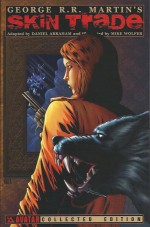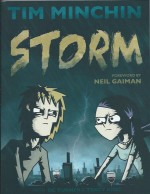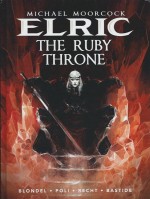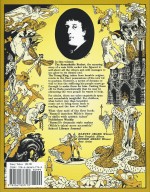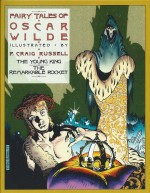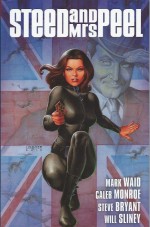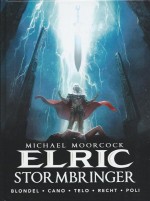
By Julien Blondel, Jean-Luc Cano, Julien Telo, Robin Recht & Didier Poli, translated by Edward Gauvin (Titan Comics)
ISBN: 978 -1-78276-125-9
Michael Moorcock began his career as a comics creator aged 15; writing and editing classic strips like Dogfight Dixon, Jet Ace Logan, Captain Condor, Olac the Gladiator, Tarzan and many, many other British favourites. As the swinging Sixties began he made the leap to prose fiction where he single-handedly revitalised a genre in 1961 with the creation of Elric and the high-concept notion of the Eternal Champion.
Elric is a landmark of the Sword and Sorcery genre: fore-doomed last ruler of the pre-human civilisation of Melniboné, a race of cruel, nigh-demonic sorcerers. These arrogant, dissolute creatures are in a slow, decadent decline after millennia of dominance over the Earth.
An albino, Elric is physically weak, buoyed up by drugs, blood and dark magic, and of a brooding, philosophical temperament. He cares for little save his beautiful cousin Cymoril, who will die one day whilst he battles her loathsome usurping brother Prince Yyrkoon in service to a manipulative god of Chaos.
The White Wolf doesn’t even really want to rule, but it is his duty, and he is the only one of his debased race to see the (comparatively) freshly evolved race of Man as a threat to the Empire.
As this volume opens he is yet to be owned by the terrible black sword: one of a matched pair of sorcerous weapons which steal the souls of their victims and feed that stolen life and vitality to the wielder…
Elric is a tragic incarnation of the restless Eternal Champion, reincarnated in every time, place and alternate dimension. His life is violence, blood and unending tragedy, exacerbated by dependence on that soul-drinking ebony blade and his sworn – if somewhat compelled and thus reluctant – allegiance to the chimerical Lords of Chaos.
Everybody knows all that, right?
In 2013, however, the creator of the iconic wanderer – and arguably a whole sub-genre of fantasy fiction – has allowed his premiere paladin to undergo a visceral, spectacular and enchanting make-over under the auspices of a team of premiere French graphic arts prodigies.
Tasking themselves to re-adapt, augment and expand Moorcock’s tales and novels (with his willing and eager permission and supervision), writers Julien Blondel and Jean-Luc Cano, illustrators Julien Telo, Robin Recht & Didier Poli, with colour-artists Recht, Jean Bastide & Scarlett Smulkowski, resume the reinvigoration in Stormbringer.
This second chapter in the doom-drenched saga is preceded by a powerful introduction and affirmation of Elric’s impact in Alan Moore’s ‘Reflections in a Pink Eye’ and this sumptuous oversized (284x212mm) colour hardback album also includes – at the back – another look at the creative process in ‘Genesis’; via pages of design sketches (Elric and Stormbringer and the Dragon Caves) and a exploration of the working process of the ‘New Talents’ who recently joined the large storytelling team…
What Has Gone Before: usurper Yyrkoon has escaped his punishment through sorcery and taken Cymoril with him. Despite pledging himself to Arioch, Duke of Swords, weeks pass and all Elric’s arcane might is unable to glean where the fugitive has taken her.
The pallid, impotent Emperor has become a raging fury of frustration…
The dark, brooding epic continues as the albino brutally chastises Melnibonéan subjects and elemental agents tasked with finding Yyrkoon and Cymoril. The streets of Imrryr run red with sacrificial blood and the gory scraps of ghastly auguries, but no answer can be found.
At last the dejected sovereign calls again upon Arioch and this time the puissant hell-lord offers a shred of useful information…
Impatient and incandescent with rage Elric then exploits his ancestral relationship with majestic sea god Straasha, who once more honours his ancient pact with the rulers of Melniboné but again indicates times are changing and such services are soon to end…
In the Dragon Caves below the city, faithful Tyvim Tvar inducts his sons into the arts of commanding The Great Winged Ones, fearing that his latest endeavour with Elric will end badly…
On a quiet morning Staasha’s proffered aid hoves into magnificent view: an astounding vessel unlike any other. The Ship Which Sails over Land and Sea was built in eons past to seal a truce between Straasha and his brother Grome, Lord of the Earth Elementals who had warred for half the age of the world. Soon the incredible thought-guided vessel is soon hurtling towards the Young Kingdoms.
Elric anticipates satisfaction but enjoys no peace. His dreams are plagued with scenes of his consort-cousin Cymoril expiring in blood and fire…
Nearing their hidden quarry a grievous setback halts the chameleonic craft in its tumultuous course as mountainous Grome manifests, demanding the return of his ship. Nothing will sway him and, with his soldiers valiantly perishing, their enraged commander capitulates…
Undaunted, Elric leads his surviving warriors on foot across the foreboding terrain, infested with the upstart monkey people who would challenge their betters. He accepts terrified hospitality from peasants and rewards the humans in ways that delight his rattled and despondent, casually sadistic Melnibonéan warriors…
Eventually the weary task force arrives at the antediluvian and horrific city of Dhoz-Kam – site of a terrible battle between the Lords of Law and Chaos – and immediately readies himself for battle with Yyrkoon. His vile cousin is a great magical adept and is certain to have taken precautions.
The Emperor couldn’t be more right and an indescribably protean thing decimates his troops. Elric does not care and pushes on, finding Yyrkoon just as the madman butchers Cymoril…
Screaming out to Arioch, Elric pleads for her life and the whimsical god answers… after a fashion. Having made similar deals with both cousins, he suggests they fight using the demonic weapons he has been safeguarding: huge, deadly sisters of shining black metal, calling eagerly for someone to hold them…
With Elric wielding Stormbringer and Yyrkoon its demonic twin Mournblade, all the hate and fury the cousins bear each other comes out in mind-bending combat. However as the duel escalates the albino realises his sword is communicating with him, urging him on to ever-greater excess and demanding a price paid in blood and souls…
Much as he wants Yyrkoon dead he won’t be any being’s puppet and refuses to administer a killing blow. Still furious however he realises Arioch has his own agenda and needs him. Defiantly arrogant, the Emperor dictates new terms for their relationship…
None the less, Stormbringer must be fed and, after ministering to the resurrected Cymoril and setting course for the Dreaming City, Elric finds a way to give the blade its appalling reward…
Back in Imrryr at last, the emperor begins his service to Arioch with an astounding announcement. He is abdicating and names the traitor Yyrkoon as his successor…
To Be Continued…
Elric is a primal character whose sheer imaginative force has inspired a host of superb graphic interpretations – and probably daunted many eager movie producers – with the astonishing complexity and emotional power of his dying, dawning world. This latest tremendously dark and deeply engaging graphic extravaganza again raises the creative bar and proves why he is the leading light of fantasy fiction.
Elric: Stormbringer and all contents are © 2014 Éditions Glénat. This Translated Edition © 2014 Titan Comics. Adapted from the works of Michael Moorcock related to the character of Elric of Melniboné © 2013, Michael & Linda Moorcock. Introduction © 2015, Alan Moore.
Michael Moorcock’s Elric volume 2: Stormbringer will be released on March 31st 2015 and is available for pre-order now.


